- Home
- Gustave Flaubert
Madame Bovary (Modern Library)
Madame Bovary (Modern Library) Read online
Praise for Adam Thorpe’s Translation of
MADAME BOVARY
“What leaves me reeling with each re-reading (and Adam Thorpe’s new translation is, pardon the pun, to die for) is the use of language. There can be no doubt as to the reason for Flaubert’s brain popping at the top of the stairs when he was fifty-eight. He broke it scouring for perfect sentences, words, le mot juste.”
—The Independent
“Flaubert described his great work as a poem, so it is fitting that a poet and novelist of Thorpe’s stature should turn his hand to it.”
—The Herald (Scotland)
Praise for Adam Thorpe
“Thorpe is one of the most underrated writers on the planet.”
—The Guardian, on Flight
“Adam Thorpe’s novel is richly enjoyable on many levels; readers familiar with medieval literature will admire the virtuoso skill of his elegant pastiche (with scholarly footnotes) of middle English; its world view trembling always between dread and delight. But no prior knowledge of the Robin Hood legend is necessary to appreciate the lustrous prose, the humanity and the exuberant inventiveness of this strange and lovely book.”
—The Telegraph, on Hodd
2013 Modern Library eBook Edition
Introduction, translation and editorial apparatus copyright © 2011 by Adam Thorpe
All rights reserved.
Published in the United States by Modern Library, an imprint of The Random House Publishing Group, a division of Random House, Inc., New York.
MODERN LIBRARY and the TORCHBEARER Design are registered trademarks of Random House, Inc.
Originally published in the United Kingdom by Vintage, a member of The Random House Group, London, in 2011.
Library of Congress Cataloging-in-Publication Data
Flaubert, Gustave, 1821–1880.
[Madame Bovary. English]
Madame Bovary: provincial morals/Gustave Flaubert; translated, annotated, and introduced by Adam Thorpe.—2013 Modern Library Paperback edition.
pages cm
eISBN: 978-0-8129-8521-4
1. Physicians’ spouses—Fiction. 2. Married women—Fiction. 3. Adultery—Fiction. 4. Middle class—France—Fiction. I. Thorpe, Adam, 1956– II. Title.
PQ2246.M2E5 2013
843’.8—dc23
2013010282
www.modernlibrary.com
Cover design: Emily Mahon
Cover illustration: Faye West
v3.1
CONTENTS
Cover
Title Page
Copyright
Introduction
A Note on the Translation
MADAME BOVARY
PART ONE
I
II
III
VI
V
VI
VII
VIII
IX
PART TWO
I
II
III
IV
V
VI
VII
VIII
IX
X
XI
XII
XIII
XIV
XV
PART THREE
I
II
III
IV
V
VI
VII
VIII
IX
X
XI
Dedication
Acknowledgments
Notes
About the Translator
INTRODUCTION
Gustave Flaubert was born in Normandy in 1821, the son of a renowned surgeon. Brought up in the domestic wing of Rouen’s main hospital, the boy was often within earshot of the sick wards’ moans and in sight (if he climbed a trellis) of his father at work on the anatomy theater’s corpses. He learned to read only at the age of eight, despite the efforts of his anxious, migrainous mother. He studied law in Paris for a short time but in his early twenties suffered a probable epileptic attack, which curtailed his law career and, with some relief, he devoted himself to writing, “with the stubbornness of a maniac.” Within two years both his father and his beloved sister, Caroline, had died—the latter in childbirth.
Madame Bovary appeared initially as a serial in the Revue de Paris in 1856, and was the author’s first published work. An account, based on real cases, of provincial adultery in the flatlands of Normandy, it is also “brutal” (the author’s word) in its realism; notorious for its dissection of the consumerist, industrializing France of the midcentury; prescient in its depiction of a woman alienated from the life that surrounds her; and often, it must be said, piercingly funny. Its author, the Revue and the printer were put on trial for the novel’s perceived sexual frankness, although this turned out to be an illusion of the book’s sensual, meticulous prose: while, for example, the waltz scene was attacked for immorality, the book’s fetishistic and phallic content of shoes, feet, gloves, cigars, cactus plants, spires, apricots, pen-knives and so on went unnoticed.
Thanks to Flaubert’s abundant letters, particularly to his mistress Louise Colet and to the novelist and feminist George Sand, we know that the novel’s five-year composition, inked with a quill (Flaubert hated metal nibs as much as he hated railways), was both agonizing and exhilarating. “We love what tortures us,” he claimed. The trial helped to make the book, and its unknown author, famous overnight. The work’s startling newness was immediately recognized: in the words of Maupassant commenting some thirty years later, Madame Bovary “revolutionized the art of letters.” As much as the paintings of Manet or Courbet, Flaubert’s work heralds the start of the modern.
The novel was, however, written against the grain: Flaubert was at heart a romantic in love with exotic tales, realms and ruins—not the gritty, the seedy, the banal. He was no Zola, whose own tale of adultery, Thérèse Raquin (1867), takes urban ennui and shabbiness to a gruesome extreme. Flaubert had abandoned his previous work, a seething phantasmagoria concerning the life of Saint Anthony in his desert retreat, after a thirty-two-hour reading had numbed his long-suffering friends Maxime du Camp and Louis Bouilhet, who suggested he write something “down-to-earth.” Flaubert took the hint: a disciple of the master prose stylist Chateaubriand, he may have declared that “style is everything,” yet this time he rooted his fiction in the messiness of the everyday. This would not be easy for a man who wrote, “Life is such a hideous business that the only way to tolerate it is to avoid it … by living in Art.” There is something in this of the desert hermit’s self-flagellating discipline and denial.
Concerning his new book, he told Louise Colet, “I’m striving to be buttoned-up and to follow a geometrically straight line.” Yet he would refer to the novel as a poem, and although it borrows from poetry a willed tendency to let language lead the way, this is always in taut tension with the demands of narrative and of the muddy fields, overfurnished rooms, trite conversation and closed minds of the story’s rural setting, where Paris remains “vaguer than the Ocean.” Above all, the author was taking on his greatest enemy: the bourgeois—defined by him as “anyone who thinks ignobly.”*
Here we find a contradiction, part of that inner freedom belonging to the greatest artists. Although Flaubert loathed the ultra-bourgeois, conservative France of the mid-nineteenth century, he was himself both deeply conservative politically (“the whole dream of democracy is to raise the proletarian to the level of stupidity attained by the bourgeois”) and passed a thoroughly regulated existence in a riverside maison de maître, in the Normandy hamlet of Croisset, living off the proceeds of family land and cosseted by his mother and assorted servants. Apart from occasi
onal bouts of Parisian libertinage and travels to, among other places, Tunisia, the Levant, Italy and London, Flaubert did nothing but work at words in his tobacco-fugged study—so obsessively that it led to his final collapse from a stroke in 1880.
Not long before his death, he had advised his friend, the society hostess Gertrude Tennant (who hated Madame Bovary), to be “regular and orderly in your life like a bourgeois, so that you may be violent and original in your work.” The art came first. He detested overromantic works as exemplified by the poet Lamartine† (one of Emma Bovary’s favorite authors), yet his professed literary aim was beauty and harmony. Beauty, for Flaubert, was less to do with conventional mellifluousness than the precise matching of word to experience. Recording the reality of human society—including its peevishness, ugliness, hypocrisy and stupidity—meant honoring it with language just as a poet might honor a sunset or the eyes of a lover.
Thus Flaubert’s ideal was both a rational fidelity to the truth—an enlightened, quasi-scientific concept—and a desire somehow to match that truth in the parallel and quite fictive universe of words: to reduce the distance between language and things. The heartbeat of that universe, for Flaubert, was rhythm. There is not a sentence in Madame Bovary that does not bear its own particular pulse, rippling against the shimmering surface patterns of assonance and alliteration, in themselves subservient to the lived experience being described—the tap of Hippolyte’s wooden leg in the church, a fresh breeze blowing through reeds, the bulkiness of cattle moving back to their stalls, the scoop of a hand in sugar-white arsenic.
The thousands of pages of drafts, now transcribed by the University of Rouen and viewable on the Web (www.bovary.fr), are testament to Flaubert’s inky struggle: but the process can also be viewed as a highly refined one of condensation—distilling the material to the mot juste. There are alarming excisions. Long and intricate episodes of great poetic power—such as Emma looking at the dawn landscape through panes of colored glass after the ball at Vaubyessard—are discarded even at proof stage, sometimes leaving an image or even a sentence stranded in ambiguity. When Scott Fitzgerald did something similar to The Great Gatsby, he was aided by a brilliant editor: Flaubert seems to have achieved it in isolation, cutting a path into virgin territory.
This self-control extended even to the depiction of characters who would be at home in a period “sensation” novel or melodrama: the salesman and moneylender Lheureux is all too plausible in his commonplace cunning (his schemes never quite criminal), while the upper-class libertine Rodolphe is closer to nihilism than to fashionable cynicism. As for the minor characters, the servant-boy Justin’s story is a miniature masterpiece of tragic infatuation, while even the brief glimpses of the peasant wet nurse and her scrofulous charge, approached through what can only be described as a remarkable tracking shot of disheveled ruralism, absorb not a drop of sentiment. As for the “advanced” pharmacist Homais, a self-righteous Rabelaisian grotesque whose views occasionally sound close to Flaubert’s own (particularly about religion), the author never allows his loathing of that type to interfere with the merciless portrayal‡—an even more remarkable achievement when one knows that Madame Bovary was written in a state, as he put it, of “continual rage.”
In a letter to Louise Colet in 1853, Flaubert worries that, after 260 pages, he has written only descriptions of place and expositions of character, consoling himself with the notion that it is a biography, not a developed event. Or several biographies. Much of Part One is an account, not of farmer’s daughter Emma, but of the dull medical officer with an “almost interesting” face, who timidly loves her and becomes her husband—Charles Bovary. The book’s structure is, therefore, unconventional: a lengthy and often slow preparation for Emma’s downfall, whose last phase takes place in a breathless rush that feels alarmingly authentic.
During this final crisis, Emma experiences hallucinations drawn from Flaubert’s firsthand knowledge of epileptic attacks (he is always, as in everything, medically accurate). Throughout, Madame Bovary skillfully negotiates inner and outer experience with such subtlety that it is only in the modulation of a phrase, a minutely calibrated change of rhythm or vocabulary, that we pass from one to the other, even in the shifting of point of view. Where the latter coincides with the narrator’s view, we have what has been termed style indirect libre or free indirect discourse, where the narrative is colored by the tone or vocabulary of one of the characters. It is, in one sense, the overlapping of spoken (or thought) language with the written. Flaubert was probably the first to use it in French literature, where the division had been especially marked.
Although the technique appears in earlier English authors such as Jane Austen, Flaubert uniquely combines it with the complete absence of the authorial “I,” or the kind of moralizing commentary we find in Charles Dickens or George Eliot. His revolutionary decision to keep himself out of the picture (“author’s personality absent,” as he put it), left the job to language alone. It freed him from sounding, as he feared, like “Balzac Chateaubrianisé”—that is to say, like a highly stylized social realist. And it offered Flaubert a treasure-house of possibilities: he could play the full range of linguistic and literary devices—parody, pastiche, nuance, irony, wordplay, imitation, contrast, repetition and so on—without any apparent intermediary. This, above all, is why the critic Roland Barthes dated modernism, not from a particular year, but “from Flaubert.” The way was prepared for James Joyce’s multitongued Ulysses, T. S. Eliot’s cubist collage of voices in The Waste Land, the subjective fluidities of Virginia Woolf’s Mrs. Dalloway. All that remains of Flaubert’s own voice is its insistent and justly famous irony: a tone we come to hear and recognize, nevertheless, and savor for its familiarity.
There is a further twist, however. The first word of the novel (a last-minute alteration) is “nous,” or “we.” This sets up two elements: a collusion with the reader, and an apparent narrator. An eyewitness, a schoolboy in a rowdy class, recalls watching the trembling new boy, Charles Bovary, arrive during term time. A few pages later, the same narrator, his voice popping up without warning, claims to remember “nothing about him.” Having annulled himself, he vanishes. We then have a supple narrator who seems both limited and omniscient, varying between microscopic intimacy and a disdainful loftiness that apparently reaches its extreme with Emma’s unseen coupling in the hackney coach. Jean-Paul Sartre, in his psychoanalytical study The Family Idiot, described this as “copulation in general … viewed by a being … [who] takes his place outside humanity.” The “being” is also, surely, the exhausted driver, who sees the world only through street names and the glimpsed details of ivied terrace, spurstones and a field of red clover.
Furthermore, the opening scene itself was a standard subject for school compositions: thus one of the most sophisticated novels ever written begins with a derivative school exercise. The simple directness of the first paragraph reflects this. These are literature’s humble beginnings; the schoolroom’s scratch of letters.
But what looks at first like a simple communion between life and language is something much more complex. Flaubert was living in the first period of mass communication, when the combination of newspapers and the railway gave the printed word a new potential for both good and bad: it was certainly more likely to spread stupidity than wisdom, as we see in the go-ahead figure of Homais, both an avid consumer of print and a deadly contributor: his eulogy on the clubfoot operation and science in general remains singularly relevant in our own disappointed age. Emma’s sentimental reading gives her an inauthentic vision of life’s potential, an eternal dissatisfaction with what she has, “her dreams tumbling into the mud like swallows.” Her first lover, Rodolphe, mimics romantic discourse in his seducer’s letter of rupture, reducing words to empty husks, vehicles of lies, in the same way that Léon, the besotted, blue-eyed lawyer’s clerk, can spout only poetic clichés. Fragments of poems, stereotypes drawn from literature, technical manuals, medical parlance, scientific facts and
statistics, newspaper articles, religious tracts, litter the characters’ conversations, making us doubt what they are saying or thinking, or even whether they know what they really think.
Flaubert continually reminds us, then, that what we are reading is itself an artifice, subject to the same critical skepticism as any other verbal matter. There is no such thing as a neutral, omniscient narrator—even in the lyrical glimpses of the Normandy landscape, long used in French schools as stylistic exemplars. The lengthy opening description in Part Two of Yonville-l’Abbaye, the country market town (“this poor village”) where Charles has his practice and Emma her emotional prison, is thoroughly Homais-like in its emphasis on utilitarian progress, and climaxes like the authorial signature on the pharmacist’s name written “in letters of gold on a black ground”: the place has already been appropriated by the bourgeois mind.
So it is perhaps no coincidence that one of the recurring words in the novel is “étaler”: to put in the window; to display; to show off; to spread or stretch out; to sprawl (s’étaler). Flaubert loved to denigrate his task, to liken himself to an organ-grinder or, like Yonville’s tax-gatherer Binet, a turner of napkin rings. The excitement of the modernist experiment was just this thrill of tension, like an electric current, between the two opposite poles of reality and artifice: a self-consciousness that reveals, not surface, but a vertiginous depth, a glorious mise en abîme in which humanity struggles to find meaning.
In a secular age, this question of life’s ultimate meaninglessness provokes art to its finest efforts; and throughout Flaubert’s life, public events conspired to provoke a general ennui in anyone of an idealistic or romantic temperament. At the time Madame Bovary was being written France was still traumatized by the collapse of the ancien régime a half-century earlier, followed by revolutionary experiment and terror; imperial aggression and grandiloquence under Napoléon; a consolidation of both religion and monarchy under the ultra-reactionary Charles X; before a further revolution established a more genial figure on the throne, the bourgeois Louis-Philippe, in 1830 (the novel’s action mostly takes place in the 1830s and 1840s). The period continued to be spattered with civilian blood, however, as the disenfranchised, often starving, failed to be included in the utilitarian drive for progress—manned by armies of bureaucrats and businessmen whose generals were members of Flaubert’s hated bourgeoisie. By the 1850s, their leader had become an emperor, the farcical little Louis-Napoléon, who dissolved the Assembly in a bloody coup that left hundreds dead in the Paris streets. No wonder democracy, for Flaubert, felt sham; his retreat into his rural study and the creation of a fictive, parallel world was something of a survival technique.

 Bouvard and Pecuchet
Bouvard and Pecuchet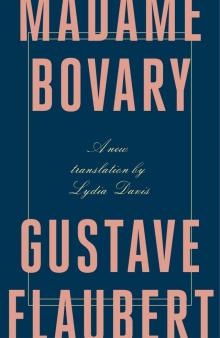 Madame Bovary
Madame Bovary The Temptation of St. Antony
The Temptation of St. Antony Bouvard and Pécuchet: A Tragi-comic Novel of Bourgeois Life, part 1
Bouvard and Pécuchet: A Tragi-comic Novel of Bourgeois Life, part 1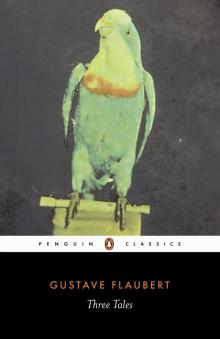 Three Tales
Three Tales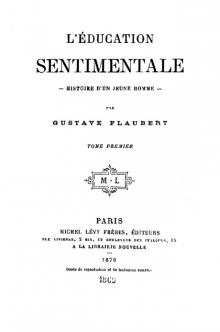 Education sentimentale. English
Education sentimentale. English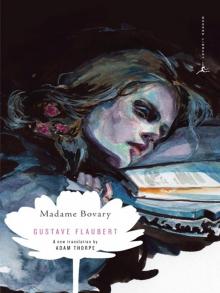 Madame Bovary (Modern Library)
Madame Bovary (Modern Library)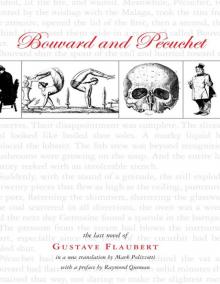 Bouvard and Pécuchet: A Tragi-comic Novel of Bourgeois Life, part 2
Bouvard and Pécuchet: A Tragi-comic Novel of Bourgeois Life, part 2 Sentimental Education; Or, The History of a Young Man. Volume 1
Sentimental Education; Or, The History of a Young Man. Volume 1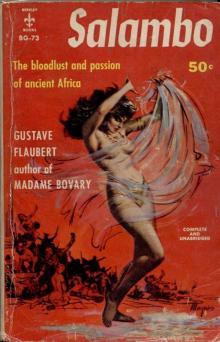 Salammbo
Salammbo Memoirs of a Madman and November
Memoirs of a Madman and November Complete Works of Gustave Flaubert
Complete Works of Gustave Flaubert